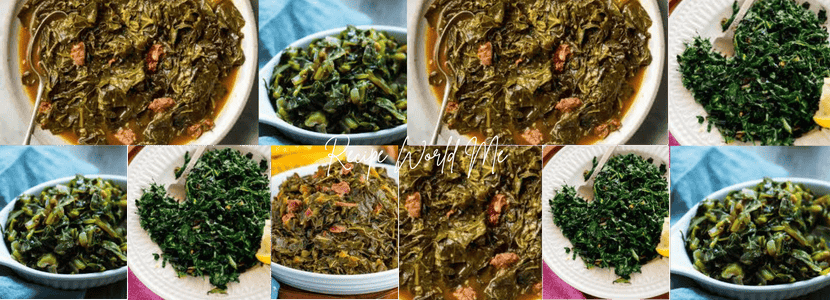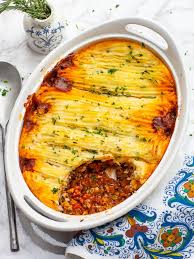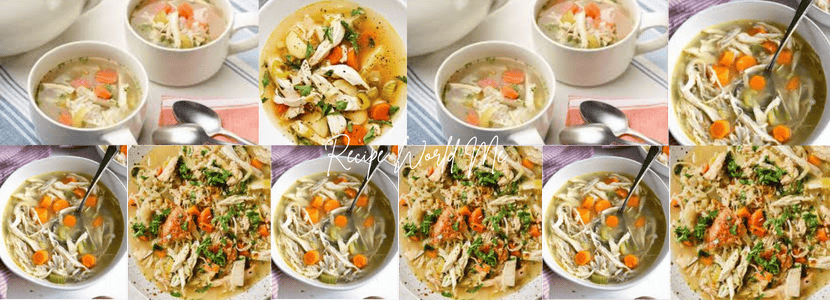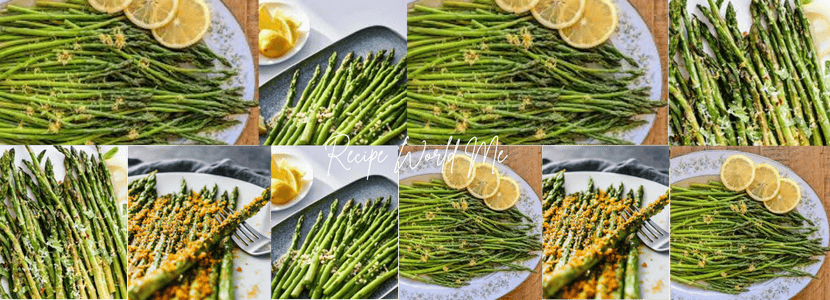
Beyond the Plate: Unveiling the Magic of Collard Greens and Why They Deserve a Spot on Your Table
Is there a food which makes you go back into the past? The smell of the collard greens cooking on the stove brings back sweet memories to many because it is a real walk through the door in the family reunions, Sunday meals and the warmth of home. They are not the sexiest vegetable in the world, but these leafy greens are close to many people. They are rightfully known as an indefinitely brewing side dish, but they can be much more than a long cook. So welcome to our parade of collard green delights in the hopes that we can open your mind to new horizons about how nutritious and tasty abuse/absence of collard green can be.
The Humble History of Collard Greens: More Than Just a Southern Staple
Although collard greens are considered to be a part and parcel of the South of the USA, their history is much broader. In fact, they belong to the Brassica oleracea family, which also falls in the category of cabbage, kale, and broccoli. This is a family that has been grown over thousands of years with collards having their origins in ancient Greece and Rome. They spread to the other parts of the world, and, over the centuries, they became a staple in most cultures, specifically because they withstand colder temperatures and climates.
Why Are They So Popular in Southern Cooking?
The American southern version of collard greens has an inseparable bond with the African American cooking. They were an easy and healthy food source. Slow-simmering them together with some piece of smoked meat such as ham hock or bacon became a way to render the tough leaves tender and to impart to them a rich, smoky flavor. Not only did this render them edible, it also produced the so called “pot liquor” which is regarded as the most delicious part of the dish.
A Nutritional Powerhouse: The Surprising Health Benefits of Collard Greens
In addition to their heavenly flavour, greens are a nutritional superhero. These green, dark leaves contain lots of vitamins and minerals that will perform miracles to your health.
1-Vitamin K: Collard greens are very rich in Vitamin K, which is necessary in blood clotting process and bone health. And this is true; just a cup of cooked collards will be more than enough to meet your daily recommended intake.
2-Vitamins A & C: They also contain Vitamins A and C which are very strong antioxidants. Protecting the eye health is Vitamin A, and to have a perfect immune system and a healthy skin Vitamin C is important.
3-Fiber: Collards have a high level of fiber in them which is beneficial to digestion. The fiber can make you feel full and can also assist in the maintenance of blood sugar.
4-Calcium: Non-dairy sources of calcium also include collard greens. Calcium aids in the health of the teeth and bones.
Adding this superfood to your diet is a convenient means to improve the general state of your health. The most interesting fact is that When a word has more than one vowel. They are also low in fat and calories and so, can be enjoyed guilt free.
Did You Know? The water left after cooking the collard greens is known as the pot liquor, which is a nutrient-rich liquid and is usually used as a healthy savory broth or even consumed as a drink on its own due to its great flavor and goodness!
Mastering the Art of Cooking Collard Greens
Ready to make your own yummy version? Here is an easy guide to cooking super tender collard greens that will convert you.
Step 1: The Prep
Start by thoroughly washing your collard greens. This is necessary as they can sometimes have a bit of grit in them. Then tear off the tough central stems either by folding the leaf in half and cutting them out or by simply tearing the leaf away. When the stems are discarded, the leaves were to be stacked and rolled into roll-up the shape of a cigar. Thinly slice them as’ well, or, in other words, cut them in the chiffonade style.
Step 2: The Flavor Base
In a big pot or a Dutch oven, you render something smoked–bacon, a hunk of ham, or even smoked turkey is ideal. Pull out the meat and sauté some chopped onions and garlic in the fat that was rendered. This makes a rich, earthy foundation with your greens.
Step 3: The Simmer
Add the chopped collard greens to the pot, along with some chicken or vegetable broth and a splash of apple cider vinegar for brightness. Place the smoked meat back on the cook pot. Boil the mixture and then simmer it and with a lid and cook it over half an hour. In the case of the softest greens you may keep them simmering two or three hours. The more they are cooked, the tender they get and the blended they are in flavor.
Beyond the Classic: Creative Ways to Use Collard Greens
There are more than ways to natural dye, don’t just stick with tradition. These very useful greens could also be used in lots of other dishes.
| Use | Description | Notes |
|---|---|---|
| Wraps | Use large, blanched collard green leaves as a low-carb substitute for tortillas | Great for sandwiches or wraps |
| Stir-Fries | Dice and toss into stir-fry dishes | Adds nutrition and a slightly earthy, sweet flavor |
| Soups and Stews | Add to hearty soups and stews | Holds shape well and adds texture |
A Final Thought on a Timeless Tradition
Cooking a pot of collard greens is an act of love and patience. It is a means of pacing yourself and making something really satisfying and wholesome. The next time you are in the grocery store do not just walk past them. Hire a few and give them the opportunity. You could find a new favorite dish, new family tradition and new appreciation of this simple, yet magnificent food.
Frequently Asked Questions
Q.What exactly are collard greens? How are they different from our sarson ka saag?
A.American cooking Also known as leafy green vegetables, with their huge, dark leaves and stiff stems, they are popular collard greens. There are some differences between ours local greens and these. Collards taste better compared to the spicy, bitter taste of mustard greens (sarson ka saag) because they are more mellow and even slightly nutty. They are also significantly tougher than spinach (palak), and thus they have to endure longer cooking until they can be tender.
Q.Do I have to cook collard greens for hours? I don’t have that kind of time.
A.No not a bit! Although the traditional Southern preparation entails a lengthy, slow simmer in order to make them super duper tender, you can certainly cook them in a fraction of this time. If you need them brighter and on a quicker time frame, saute these or steam them in only 10-15 minutes. The technique leaves them with more of their natural bite and fresh flavour, so you might use them to your great side dish of the weeknight.
Q.What’s the best way to wash and prep collard greens? They always seem so sandy.
A.Grit, yes, there is gallons of that in big leaves! The most effective way is to put lots of cold water in a clean sink or in an incredibly large bowl and place the leaves in it so that they are covered with water. Move them briskly to shake any mud free then allow them to stand one minute before turning the grit towards the bottom. Raise the greens out of the water (don?t pour the water out over them!), and if necessary repeat until the water is clear. Prepping is easy just cut away that stiff, thick stem down the middle then chop the leaves.
Q.Can I cook collard greens in a Pakistani style, like a regular saag?
A.Certainly, you could experiment with some local style way of cooking them! They are pretty difficult; you would like to cut them into small pieces, and maybe pressure cook it with ginger, garlic, and green chilies till it becomes extremely soft. Then you could squish them or puree them a little like a sarson ka saag and then serve it along with a typical butter or ghee tarka.
Q.I’ve heard collard greens are a “superfood.” What are their health benefits?
A.They are extremely healthy and nutritious! Collard greens are also packed with vitamins, mainly vitamin K that is superior to the bones and vitamin A and C that is great to your immune system. As with any leafy greens, they also contain plenty of fibre, which is extremely helpful in good digestion and satiating you.










